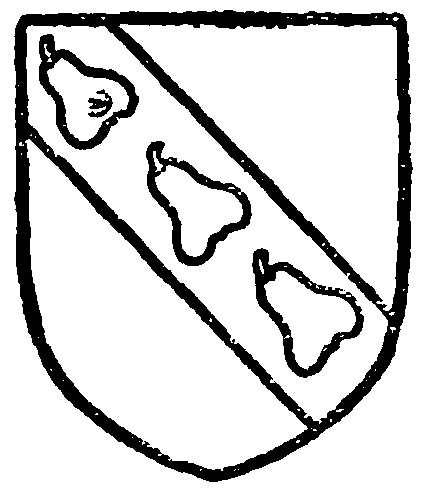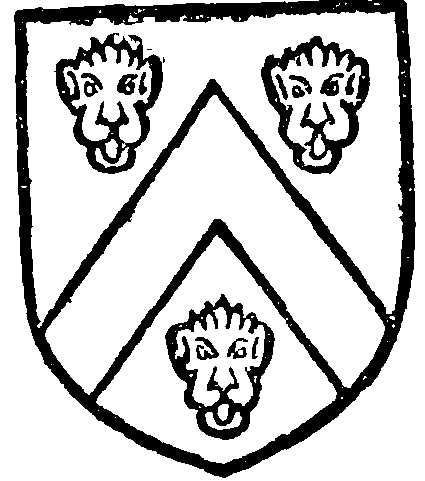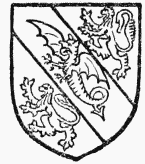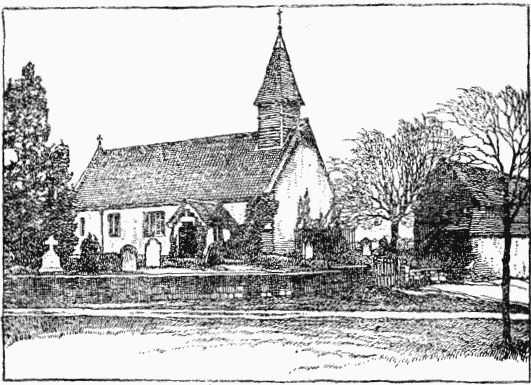A History of the County of Worcester: Volume 4. Originally published by Victoria County History, London, 1924.
This free content was digitised by double rekeying. All rights reserved.
'Parishes: Martin Hussingtree', in A History of the County of Worcester: Volume 4, ed. William Page, J W Willis-Bund( London, 1924), British History Online https://prod.british-history.ac.uk/vch/worcs/vol4/pp135-139 [accessed 24 November 2024].
'Parishes: Martin Hussingtree', in A History of the County of Worcester: Volume 4. Edited by William Page, J W Willis-Bund( London, 1924), British History Online, accessed November 24, 2024, https://prod.british-history.ac.uk/vch/worcs/vol4/pp135-139.
"Parishes: Martin Hussingtree". A History of the County of Worcester: Volume 4. Ed. William Page, J W Willis-Bund(London, 1924), , British History Online. Web. 24 November 2024. https://prod.british-history.ac.uk/vch/worcs/vol4/pp135-139.
In this section
MARTIN HUSSINGTREE
Hosintre et Merton (xiii cent.); Merton and Hosintre (xiv cent.); Mertonhosentre, Marten Hostnard, Marty' Hosentred (xvi cent.); Martin Husyngtree, Marten Husentree (xvii cent.).
This parish lies on the right bank of the Martin Brook, to the south of Droitwich, and the Droitwich Canal cuts through it on the west. The Martin Brook and the Salwarpe, which unite at the southwestern angle of the parish, form the western boundary. The road from Worcester to Droitwich runs north through the centre of the parish. In the west, in the Salwarpe valley, the land is low; to the east and south it rises to 200 ft.
The village is a mile north-east of Fernhill Heath station on the Worcester and Birmingham section of the Great Western railway. At its southern end on the Worcester road is St. Michael (fn. 1) and All Angels' Church, situated on an eminence, with the rectory to the north-west. Martin Court Farm, which adjoins the church to the west, was formerly the manor-house, and is the property of the Rev. A. W. Hill. It is a red brick house of two stories and an attic, and date probably from the 18th century. In the kitchen is a post called the Gospel post. Between the main road and the church are some old half-timber cottages. A short distance north of the church, on the Worcester road, are the pound and the Green, and a little further north an old quarry. Brownheath Common is a small piece of rough pasture land on the eastern boundary.
The parish has an area of 922 acres, of which 215 are arable land and 574 permanent grass. (fn. 2) The soil is mixed, the subsoil Keuper Marl, the chief crops being wheat and beans.
MANORS
By a charter of 972 ascribed to King Edgar five manses at Hussingtree and five manses at Martin were restored to the abbey of Pershore, having been formerly granted to that abbey by King Coenwulf at the request of the ealdorman Beornoth. (fn. 3) In the Domesday Survey Hussingtree only is entered, 6 hides there being included in the manor of Pershore which Edward the Confessor had taken from Pershore Abbey and given to Westminster Abbey. (fn. 4) Martin and Hussingtree were two separate manors, though they were taxed together in a subsidy of about 1280, when the name was written Hussingtree and Martin, (fn. 5) the order being reversed in 1327. (fn. 6)
The overlordship of the Abbot of Westminster, of whose manor of Binholme both Martin and Hussingtree were held, (fn. 7) passed at the Dissolution to the Dean and Chapter of Westminster. (fn. 8) 'Certain concealed lands in Martin Hussingtree which cannot be discovered' appear among the possessions of the dean and chapter in a terrier of 1690. (fn. 9)
Habington wrote of MARTIN: 'Of the Lordes of Merton, althoughe some wyll saye the Mertons have byn hearetofore Lorde; of Merton, yet fynd I no evydence theareof.' (fn. 10) But the tradition is supported by a reference in an early undated grant to 'all the land belonging to Hwsintre abutting on the land of William de Mertun.' (fn. 11) This William may have been under-tenant of the abbey in their 'meane mannor' of Martin, and the Perrys, who succeeded the Mertons, were possibly, as Habington suggests, descendants of the latter, having merely ceased to describe themselves by the name of this locality. (fn. 12) The advowson of the church (which was situated in this manor) being held with it, the presentations are of assistance in tracing its descent. Thomas de Perry (Pyrie) presented to the church in 1269, (fn. 13) and in 1271 he, with Agatha his wife, made an exchange with Nicholas, rector of Martin, of certain lands next the church, for lands in Hussingtree belonging to Martin Church. (fn. 14) He paid 8s. to the subsidy about 1280 in 'Hosintre et Merton,' (fn. 15) and is called lord of Martin in 1282. (fn. 16) He presented to the church in 1290. (fn. 17) Nicholas de Perry settled the manor and advowson in 1323 on himself and Agnes his wife, with remainder to his children Walter, Elizabeth, Joan, Agnes, Isabella and Margaret. (fn. 18) In 1327 he paid 8s. to the subsidy. (fn. 19) He died about 1338. (fn. 20) Walter de Perry, who may have been son or grandson of Nicholas, presented to the church between 1384 and 1387. (fn. 21) In 1388–9 his heir was distrained for relief for lands in Hussingtree. (fn. 22) This heir may have been Walter's son Nicholas, (fn. 23) or his grandson William de Perry, who died seised of a messuage and 2 carucates of land in Martin for which his son William in 1398–9 paid relief and did fealty. (fn. 24) It was probably he who died seised of Martin Mill in Salwarpe in 1402–3. (fn. 25) He seems to have been succeeded by his son John de Perry, (fn. 26) who in 1429–30 was distrained for relief and homage for his holding in Martin. (fn. 27) John died childless, and the manor evidently passed to his cousin Edmund Smith, grandson of Alice wife of John Smith, John de Perry's aunt, (fn. 28) for Edmund presented to the church between 1466 and 1493. (fn. 29) Elizabeth Smith of Martin, widow, who owed fines for suit at the court of Binholme between 1501 and 1507, (fn. 30) was probably Edmund's widow. Edmund's son John had two children, Thomas and Joan. Thomas died childless, and Joan married William Wheeler, (fn. 31) who presented to the church in her right in 1541. (fn. 32) John, the son of William and Joan Wheeler, settled the manor and advowson in 1558 on himself for life, with remainder to Humphrey his brother. (fn. 33) John died childless, and Humphrey must have been holding the manor in 1611 when he presented to the church. (fn. 34) His son George inherited the manor, (fn. 35) and was followed by a son John, a goldsmith of London, who in 1619 sold it and the advowson to John Haselocke. (fn. 36) John Haselocke died in 1641, leaving as his heirs two sisters, Margaret wife of William Browne, and Elizabeth wife of—Dickenson, having bequeathed Martin Hussingtree to his wife Isabel for life. (fn. 37) Isabel married Guy Hall, and in 1652 the representatives of Margaret Browne and Elizabeth Dickenson, (fn. 38) viz., Margaret's grandson William Browne and Elizabeth's daughters, Jane widow of Aaron Streator and Katherine wife of John Cooper, and her grandson George North sold the reversion of the manor to Guy. (fn. 39) He died in the following year, (fn. 40) having bequeathed Martin Hussingtree to Isabel, (fn. 41) who shortly afterwards married Dr. Nathaniel Tomkyns, prebendary of Worcester. (fn. 42) She died without issue in 1660, and the manor passed to her great-niece Eleanor daughter of Edward Folliott. Eleanor died in infancy soon after, and was succeeded by her uncle Guthlac Folliott. (fn. 43) In 1684 Guthlac and Elizabeth his wife, with their daughters Elizabeth wife of Robert Burrington and Frances Folliott made a settlement of the manor. (fn. 44) It is not clear by what title it passed into the hands of Samuel Swift, who appears as holding it in 1720 (fn. 45) and 1723. (fn. 46) The advowson was held in 1725 by Henry Wood, (fn. 47) but the manor may not have been held by him, as they were not held together in 1746, when Pynson Wilmot, clerk, was lord, having acquired the manor by descent from his uncle Simon Wood. (fn. 48) The manor then followed the descent of Sagebury in Dodderhill (fn. 49) to the Rev. T. H. Hill, who was holding it in 1868. (fn. 50) It now belongs to his grandson the Rev. Arthur Walter Hill. (fn. 51)

Perry. Argent a bend sable with three pears or thereon.

Wheeler. Or a cheveron between three leopards heads sable.
It seems probable that the land which the abbey of Westminster held at HUSSINGTREE in 1086 was later held of them by the Leighs, who granted a portion of their property to the abbey of Pershore. They were succeeded here as at Eckington by the Cliffords. By the 15th century lands which probably included both the estate retained by the Leighs and that which they had given to Pershore, since they were held partly of Pershore Abbey and partly of Westminster, had come into the hands of the Rudings. (fn. 52)
In an undated deed William de Leigh, steward or bailiff of Pershore, confirmed the grant made to Pershore Abbey by Matthew de Leigh, his uncle, of a virgate of his land in Hussingtree held of the church of Pershore, with tithes from all his assarts in Hussingtree. (fn. 53) In another Robert de Leigh granted to John D'Abitot land in Hussingtree. (fn. 54) The D'Abitots, who succeeded the Leighs in Hussingtree, were patrons of Hindlip, and Hussingtree may have passed with the advowson of Hindlip to the Earls of Warwick, for Guy Earl of Warwick held rents in Hussingtree in 1315 as part of his manor of Salwarpe. (fn. 55) Thomas Robins alias Thomas de Salwarpe, who presented to the church of Hindlip in 1349 and 1354, (fn. 56) held land in Hussingtree which was probably this estate. In 1357 the Abbot of Pershore leased to him for sixty years a messuage and land which Thomas Gunvyle formerly held. (fn. 57) He and his brother William obtained licence in 1347 to grant lands in Martin and Hussingtree to their chantry at Salwarpe. (fn. 58) This grant, as in the case of the advowson of Hindlip, was probably never made, (fn. 59) the estate passing to Richard de Hussingtree, patron of Hindlip in 1378. (fn. 60) Thomas Hussingtree was probably lord of Hussingtree in 1419 and 1443. (fn. 61) The lady of Hussingtree' who, according to Habington, (fn. 62) succeeded him, may have been identical with Alice widow of Richard Ruding, who presented to Hindlip in 1469. (fn. 63) Habington wrote of the Rudings as gentlemen 'in tymes past of greate accompt, whose armes are flouryshed on the coches and caroches of the Countesses of Derby, Huntingdon and Bridgwater, and other Ladyes, althoughe the heyre male of the name langwishethe, I feare, in extreme poverty.' (fn. 64) The branch of this family who succeeded the Hussingtrees in Hussingtree does not seem to be the one whose pedigree is given in the Visitation of 1569. Edmund Ruding of Hussingtree presented to Hindlip in 1501. (fn. 65) He was probably the Edmund Ruding who with his wife Alice was commemorated in the north window of Martin Church. (fn. 66) In 1537–8 John Ruding of Hussingtree was a suitor at the court of Allesborough, probably on account of his tenure of this estate. (fn. 67) George Ruding, who succeeded, is said to have died about 1564–5 seised of a capital messuage and land in Martin Hussingtree (fn. 68) which passed to his son Gilbert. Gilbert was succeeded about 1567 by his sister Anne wife of Richard Squirry (Squerry) of Hanbury. (fn. 69)

Ruding of Hussing tree. Argent a bend between two lions sable with a flying wyvern argent on the bend.
The lands retained by the Leighs and held by them of the Abbot of Westminster passed from them, probably in the same way as Eckington, to the Cliffords. The heir of Lord Clifford was holding Hussingtree of the abbey of Westminster towards the end of the 14th century. (fn. 70) It was probably this estate which was later held by the Rudings, who entered their pedigree at the Visitation of 1569, (fn. 71) but of whom, however, there are few other records surviving. The pedigree gives Edward Ruding of Martin Hussingtree, succeeded by his son John and grandson Richard, who was possibly the Richard Ruding to whom Thomas Jarveys conveyed a messuage and half a virgate of land in Martin Hussingtree in 1541. (fn. 72) Richard Ruding was followed by a son John. John Ruding had two sons, Edmund and Edward. (fn. 73) 'Thys familye ended in … Edmund Rudinge who sold Hosyntre to Sir Edmund Wheler,' (fn. 74) according to Habington, who writes of 'theyse poore gentillmen the Rudinges: so far from cotes armor as they have scarce cotes to clothe them.' (fn. 75) Sir Edmund Wheeler was uncle of the John Wheeler of Martin who sold that manor, and owner of Ruding or Ryding Court in Buckinghamshire. (fn. 76) He occurs as Sir Edmund Wheeler of Martin Hussingtree in 1619, (fn. 77) and was probably succeeded by his son William. (fn. 78)
After this no further trace of this property occurs save for a note in Prattinton's Collection that Lord Sandys sold the manor of Hussingtree to Mr. Spooner of Leigh, but the date of the transaction is not given. (fn. 79)
Two mills with appurtenances in Salwarpe belonged to the manor of Martin in 1322. (fn. 80) William de Perry was holding Martin Mill in Salwarpe in 1402–3. (fn. 81) There is now a mill called New Mill on the Salwarpe at the north-western angle of the parish.
CHURCH
The church of ST. MICHAEL AND ALL ANGELS consists of a continuous chancel and nave measuring internally about 52 ft. 5 in. by 16 ft. 2 in., south aisle 26 ft. 7 in. by 9 ft. 8 in., north porch and western bellturret of timber.
The west wall, which is 3 ft. 2 in. in thickness, with the subsequently widened west window, is probably of the 12th century, but the remainder of the building appears to have been rebuilt, perhaps in the early 13th century, the date of the easternmost window in the north wall. A chamfered plinth runs round the west, south and east walls, and is returned round the north wall for a short distance, stopping under the east jamb of the second window on this side, This window and the doorway and window to the west of it are of the early 15th century and suggest that it became necessary at that time again to rebuild this portion of the wall and to add the diagonal buttress of two offsets at the northwest angle of the nave. A stone reset at the apex of the eastern gable, sculptured with a human face, bears the date 1625, recording doubtless a general repair of the fabric, when in all probability the east and west windows assumed their present form. The stone itself, which is semicircular in shape, the head projecting corbel-wise at the apex, may be of 12th-century date, but its original position and use are difficult to determine. In 1868 and again in 1883 the church was generally restored and the south aisle added. The wall throughout are faced externally with sandstone ashlar and plastered internally.
The 17th-century east window is of three plain lights within a two-centred head, the mullions being set at about the middle of the wall. At the northeast is the lancet above referred to, while to the west of it is a square-headed window of two trefoiled ogee lights, the rear arch of which is formed by a modern wood lintel. To the east of the north doorway, which has a plain four-centred head, is a squareheaded window of three trefoiled ogee lights, similar in type to that just described, and, like it and the doorway, of the early 15th century. At the east end of the south wall is a peculiar window of two squareheaded and trefoiled lights, set near the outside face of the wall, and surmounted, by way of tracery, by a row of four quatrefoiled square piercings. The design is almost unique, but the work may probably be assigned to the late 14th century. At the west end of the same wall is a square-headed window of three lights, similar in type to the early 15th-century windows in the opposite wall, but either a restoration or entirely modern. The intervening portion of the wall is occupied by a wooden arcade opening into the modern aisle. The head of the window in the west wall appears to have been originally circular and to have been cut to its present shape when the opening was widened. The aisle is lighted by window of the same character as the original 15th-century window of the nave. The roof is modern and is ceiled in seven cants. The font and fittings are also modern.

Martin Hussingtree Church From the North-West
At the north-east of the chancel is a tablet with a Latin inscription commemorating Thomas Tomkyns, who died in 1675, at the age of thirty-seven. He was a fellow of All Souls' College, Oxford, chancellor of Exeter Cathedral and rector of Lambeth, and is described as 'Ecclesiae Anglicanae contra schismaticos assertor eximius.' He died at Exeter and his body was brought here for burial. On the same wall is a tablet to the Rev. William Chapeau, rector of Shipton Oliffe and Shipton Sollars (Gloucs.), who died in 1776. The tablet was erected by his wife Jane, daughter of Sheldon Stephens, rector of Martin and Hindlip, and also commemorates her brothers. Further west, near the pulplt, is a mural tablet to the above Jane, who afterwards married John West of Worcester and died 15 January 1793. At the south-east is a tablet commemorating the above Sheldon Stephens, who died in 1779, and his wife Mary, who died in 1781. On the same wall is a tablet to Edward Wheeler, who died 18 August 1754.
On the south wall of the nave is a marble monument with arms to William Williams of Perry, Hartlebury, who died in 1775, Mary his wife, 1811, and their sons and daughters. On the north wall is a monument to Thomas Wood, rector, who died in 1746, and his wife, who died in 1745. Near the west end of the wall is a framed board containing a table of charitable gifts, dated above 1709, and 'Roger Jones, churchwarden,' written underneath.
The bell-turret contains two bells: the treble, by Joseph Smith of Edgbaston, is inscribed, 'Richard Walling. Churchwarden 1725,' and the tenor is inscribed, 'God save King James 1617. T.W.'
The communion plate consists of a cup and paten of 1735.
The registers before 1812 are as follows: (i) baptisms 1539 to 1708, burials 1540 to 1708, marriages 1538 to 1708; (ii) baptisms 1725 to 1812, burials 1725 to 1812, marriages 1725; to 1754; (iii) marriages 1756 to 1812.
ADVOWSON
The advowson descended with the manor of Martin as late as 1723, but afterwards seems to have been held separately, the presentation being made by Henry Wood in 1725, by Sheldon Stephens in 1746, by David Williams in 1779, and by Mary Williams, widow, in 1785, 1788 and 1790. (fn. 82) In 1808 the Rev. D. Williams was patron, (fn. 83) but the advowson passed before 1817 to the Dean and Chapter of Worcester, (fn. 84) the present patrons.
By an undated deed Aldred, rector of Martin, (fn. 85) granted the vicarage of the chapel of St. Nicholas of Martin to John, chaplain of Droitwich. Martin was a chapel of St. Eadburga, Pershore, to which church it paid a pound of pepper annually, (fn. 86) and in whose cemetery it had sepulture until 1400 when the parishioners obtained the right to have a churchyard of their own. (fn. 87)
CHARITIES
In 1640 John Haselocke, as stated on the church table, by his will charged his estate in this parish with 20s. a year for some poor men or women or to place out any poor child.
The church table also recorded that there were 4 a. of land given for the use of the poor by a donor unknown. For many years an annual sum of 16s. has been received from the occupiers of the land in question and distributed among poor widows.
It was also stated on the same table that Thomas Tombs by his will dated in 1718 bequeathed £10 for the poor. This legacy appears to have been lost sight of.
In 1859 Thomas Williams, by his will proved in the P.C.C. 19 February, bequeathed £50 to be laid out in clothes and blankets for the poor. The legacy is represented by a sum of £48 on deposit with the Post Office Savings Bank, the interest being applied in bonuses to members of the coal club.
